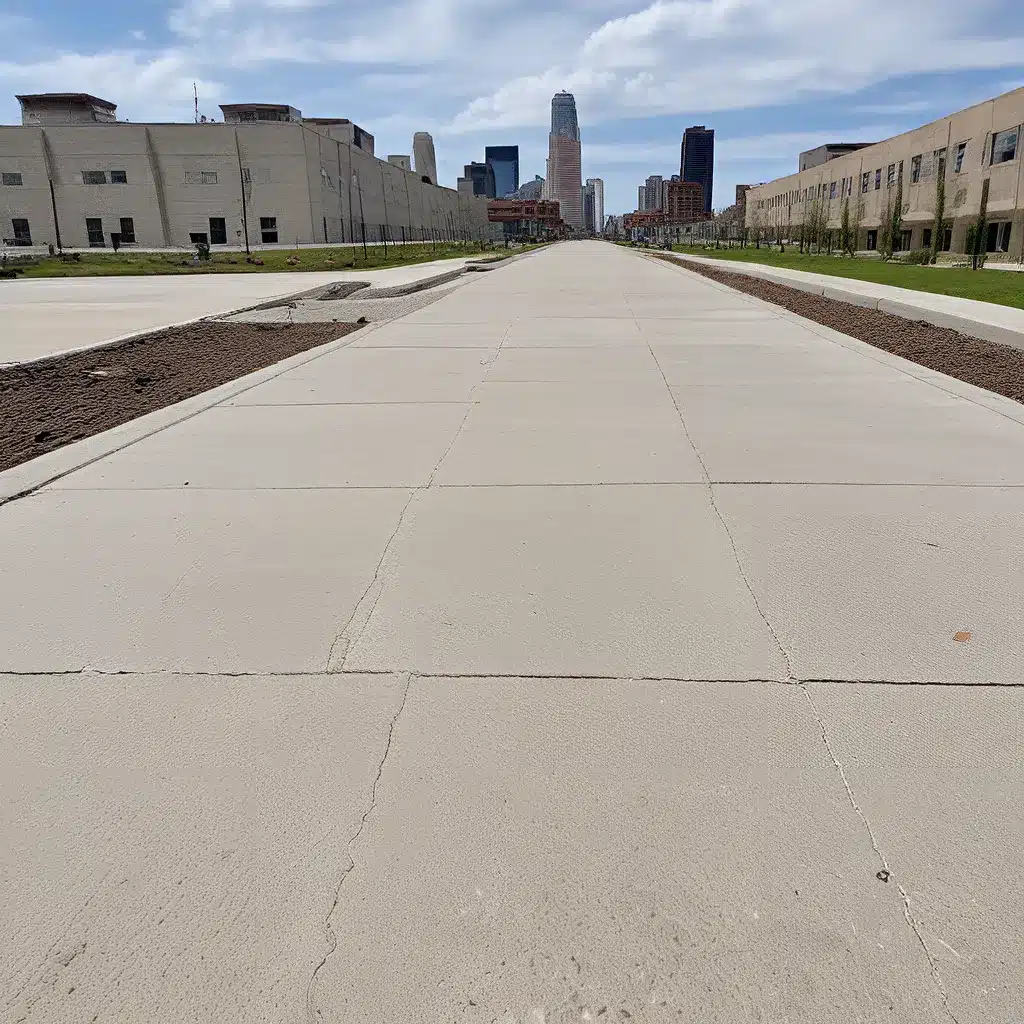
In the heart of Ohio, the city of Columbus is undergoing a transformation, one that emphasizes the importance of sustainability and resilience in its infrastructure. As the concrete repair industry plays a crucial role in maintaining the city’s roads, bridges, and buildings, it is essential to explore how this sector can contribute to a more eco-friendly and long-lasting future.
The Resilience of Concrete: A Cornerstone of Sustainable Construction
Concrete, as the backbone of the built environment, has inherent qualities that make it a sustainable construction material. Cement, the primary binding agent in concrete, is durable, tough, and versatile, ensuring that structures built with it stand the test of time. This longevity not only reduces the need for frequent repairs but also minimizes the environmental impact associated with construction and demolition waste.
Moreover, concrete structures are resilient against natural disasters, such as earthquakes, floods, and fires, providing a critical safeguard for the people of Columbus. By investing in high-quality concrete repair and maintenance, the city can ensure that its infrastructure remains safe and reliable for generations to come, ultimately saving lives and reducing the ecological footprint of repair and reconstruction efforts.
Embracing Sustainable Concrete Repair Practices
As the cement and concrete industry continues to evolve, innovative sustainable practices are being introduced to further reduce the environmental impact of concrete production and repair. The Portland Cement Association’s Roadmap to Carbon Neutrality outlines a comprehensive plan to achieve net-zero carbon emissions by 2050, addressing each stage of the concrete life cycle.
One key aspect of this strategy is the increased use of portland-limestone cement, which reduces the carbon footprint of cement production without compromising the strength and durability of the final product. By incorporating these lower-carbon alternatives into concrete repair projects, Columbus can contribute to the industry’s collective efforts to mitigate climate change.
Sustainable Concrete Repair Techniques
Beyond the material choices, the actual repair and resurfacing methods employed can also have a significant impact on the sustainability of concrete infrastructure. Traditional concrete repair techniques, such as full-depth patching or overlays, can be resource-intensive and disruptive to the surrounding environment.
However, innovative sustainable concrete repair methods are gaining traction, offering more eco-friendly solutions. Concrete resurfacing and concrete sealing, for example, can extend the lifespan of existing structures by restoring their protective qualities and preventing further deterioration. These techniques often require fewer raw materials, less energy-intensive processes, and generate less waste, making them a more sustainable choice for Columbus.
The Benefits of Sustainable Concrete Repair
Adopting sustainable concrete repair practices in Columbus brings a multitude of benefits, both for the city and its residents. By investing in durable, long-lasting concrete infrastructure, the city can reduce the frequency of repairs, ultimately saving money and minimizing the environmental impact associated with construction and demolition activities.
Moreover, sustainable concrete repair can contribute to the city’s overall energy efficiency and emissions reduction goals. Concrete structures, when properly maintained, can provide better insulation and thermal mass, leading to lower energy consumption for heating and cooling. This, in turn, reduces the city’s carbon footprint and supports its transition to a greener, more resilient future.
Collaboration and Innovation for Sustainable Concrete Repair
Achieving true sustainability in concrete repair requires a collaborative effort between industry stakeholders, policymakers, and the local community. The Portland Cement Association has already taken the lead, working with regulators, technology providers, and industry leaders to drive innovation and sustainable best practices.
In Columbus, this collaboration can take the form of sustainable construction codes, green building rating systems, and public-private partnerships that incentivize the use of sustainable concrete repair techniques. By aligning their efforts and sharing knowledge, the city and its concrete repair service providers can collectively contribute to a greener, more resilient future for Columbus.
Conclusion: Paving the Way for a Sustainable Future
As the city of Columbus continues to evolve, the concrete repair industry plays a crucial role in shaping its sustainable and resilient infrastructure. By embracing innovative repair methods, lower-carbon materials, and collaborative approaches, concrete repair professionals in Columbus can contribute to the city’s broader sustainability goals, ensuring that its roads, bridges, and buildings withstand the test of time while minimizing their environmental impact.
Through this commitment to sustainability, the concrete repair industry in Columbus is paving the way for a greener, more resilient future, one that benefits the community, the environment, and generations to come. By visiting ConcreteRepairColumbusOhio.com, Columbus residents and property owners can learn more about the latest advancements in sustainable concrete repair and how to incorporate these practices into their own projects.


